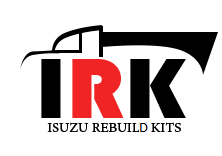How to Choose Right Connecting Rod?
Yes, there are numerous aspects to consider when selecting connecting rods for your engine. One of the most critical considerations you can make when creating an engine is which rods to use. Connecting rods influence not only how your engine fits together (or doesn’t), but also its performance and longevity.
That’s why we asked the pros at Isuzu Rebuild Kits for advice on selecting the best connecting rods for your engine and application. Horsepower and torque are, unsurprisingly, important components in the equation. It’s not just about overall power and torque levels, according to Isuzu Rebuild Kits Specialties’ Jhon Hick, but also about how power is generated.
Different types of strains are given to the connecting rods depending on the application. Large quantities of torque, for example, will result in significant compression and bending loads on the rods. High rpms, on the other hand, mostly create tensile or stretching forces. Connecting rods typically fail on the exhaust stroke at high-rpm operation due to tensile loading, rather than on the compression stroke.
“Tensile loading is also far more difficult on rod bolts than horsepower and torque,” Jhon added. “Piston weight and crankshaft stroke are two further elements to consider.” Also, the use of different fuels and nitrous will affect combustion and how the load is transmitted to the rods.”
I-Beam vs. H-Beam
I-beam and H-beam are the two most common types of connecting rods.
I-beam connecting rods are common in stock. V8 connecting rods are capable of handling up to 400 horsepower and 6,500 rpm. When you reach those levels of performance, you’ll need to look into aftermarket connecting rods. Aftermarket I-beams can bear heavy compressive loads, have strong tensile strength, and are often lighter than H-beams, depending on the type of steel used (more on that below).
The cross-sectional size of the beam determines the connecting rod’s ability to handle compression and tensile loads. As a result, aftermarket I-beam rods are often thicker in important locations to boost strength. H-beam connecting rods, on the other hand, have a unique design that increases stiffness and strength.
Two large, flat sides with a thin piece in the middle make up H-beam connecting rods. These rods are more rigid and able to withstand compression forces because to their design.
“When bending load is taken into account, the H-beam is a stronger design,” Davis added. “Because H-beam rods are more difficult to mill, they’re more expensive. I-beam rods are less expensive to manufacture and can be lighter than H-beams. H-beam rods are the strongest design when all other factors are equal.”
The material, weight, and cross-section of the rods determine overall strength and reliability, whether you use an H-beam or an I-beam.
Steel vs. Aluminum vs. Titanium
Steel, aluminium, and titanium are the most common materials for connecting rods. Again, the best option for you will be determined by the characteristics listed above (power, rpm, application, and so on).
Steel Rods
Steel connecting rods are manufactured using a variety of materials and procedures. Cast steel connecting rods, for example, were utilised in many 1960s and 1970s automobiles, but they are not suitable for high-performance applications. Forged steel is used in the majority of aftermarket steel connecting rods.
Depending on the material quality, there are many varieties of forged steel. For example, Eagle Specialties’ entry-level rods are made of 5140 steel. Most manufacturers, including Eagle Specialties, use high-carbon 4340 or 4330 steel for more heavily modified competition applications.
“Our rods are forged and heat-treated to SAE/ASTM specification 4340 steel for high-end competition,” Davis stated. “This specification allows for certain alloying element variance. Our steel has a tighter tolerance and a slightly higher yield strength than ‘normal’ 4340 steel, thanks to Eagle.”
Steel connecting rods are ideal for most applications, depending on the individual material.
Aluminum Rods
Aluminum rods are lighter than steel rods by up to 25%, making them a favourite choice among racers. Because of the decreased weight, the reciprocating assembly’s overall mass is reduced, allowing the engine to rev quicker and higher. Aluminum is also a good choice for supercharged applications, according to Davis.
“While not as sturdy as steel, aluminium is frequently utilised in very high-power blower engines,” he explained. “This is because aluminium ‘gives’ slightly under intense combustion and functions as a’shock absorber,’ preventing the detrimental shock from propagating to the rod bearing and causing bearing failure.”
The fatigue life of aluminium rods is a disadvantage. Aluminum connecting rods have a shorter service life than steel connecting rods and can extend after a number of runs down the dragstrip. However, many aluminium connecting rod manufacturers claim that in street settings, a good set of aluminium rods can last up to 100,000 miles. So it’s all about your application and your money. Aluminum is a fantastic alternative for racers who can afford to replace rods more regularly. Steel may be a more cost-effective solution in the long run if you’re on a budget if your engine is a high-torque, low-rpm mill.
Titanium Rods
A third choice is titanium.
Titanium connecting rods combine the lightweight properties of aluminium with the strength of steel. As a result, they’re a good fit for drag cars or sprint cars that need rapid throttle response. They are, however, extremely costly.
“Titanium is slightly weaker than steel, but because of its extraordinarily light weight, it experiences significantly less stress,” Davis explained. “Thus, when the entire system is evaluated, titanium can be regarded stronger.” However, it is a difficult material to work with, and it does not come cheap. And I’m not simply referring to money.”



You must be logged in to post a comment.